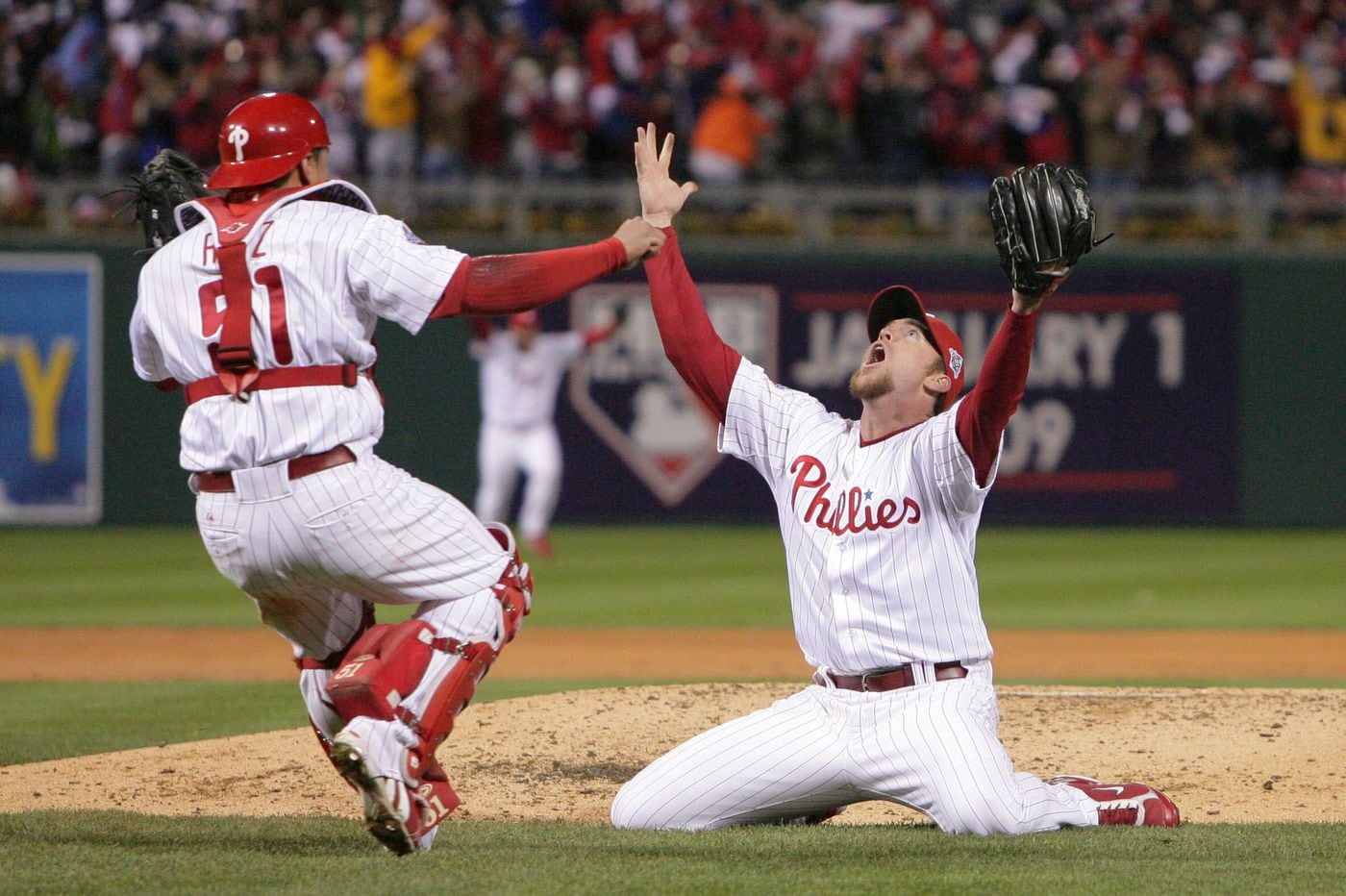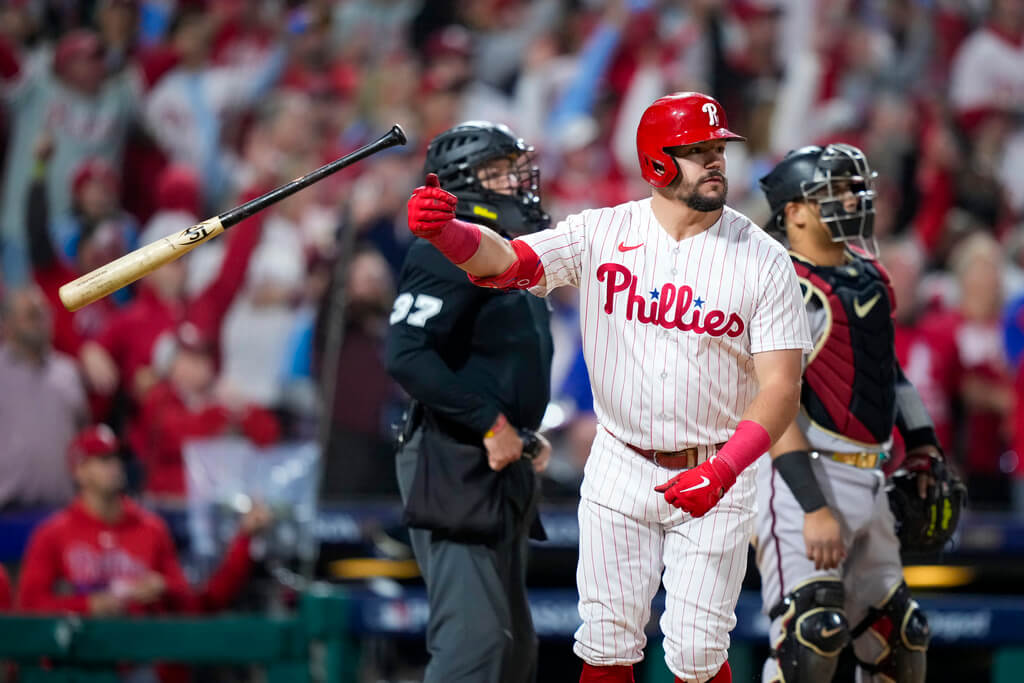History of Phillies Play-by-Play Broadcasting: Phillies Play By Play

The history of Phillies play-by-play broadcasting is a rich tapestry woven with the voices of legendary announcers and pivotal moments that have shaped the team’s narrative. From the early days of radio to the current era of television and digital platforms, the voices of these broadcasters have brought the excitement and drama of Phillies baseball to generations of fans.
Early Days of Phillies Broadcasting
The Phillies’ broadcast history began in the early days of radio, with the first game being broadcast in 1927. Early broadcasts were often limited to simple play-by-play descriptions, with little in the way of analysis or color commentary.
- 1927: The first Phillies game broadcast on radio was on July 1, 1927, when the team played the Boston Braves. The broadcast was carried on WCAU, a Philadelphia radio station.
- 1930s: The 1930s saw the rise of iconic announcers like Harry Wismer, whose energetic and colorful style captivated listeners. He became known for his trademark phrase “The Fightin’ Phils” which captured the team’s spirit and became synonymous with the franchise.
The Golden Age of Phillies Broadcasting
The golden age of Phillies broadcasting is often considered to be the era from the 1950s to the 1970s, a period marked by the emergence of legendary broadcasters like Harry Kalas, Richie Ashburn, and Gene Elston. Their insightful commentary, witty banter, and passionate calls created a unique and enduring legacy for the team.
- Harry Kalas: Harry Kalas joined the Phillies broadcast team in 1971 and quickly became a beloved figure among fans. His signature call of “Outta here!” after a home run became iconic, synonymous with Phillies victories. His deep knowledge of the game, his ability to connect with fans, and his passion for the Phillies made him one of the most respected and popular broadcasters in baseball history.
- Richie Ashburn: A former Phillies player and Hall of Famer, Richie Ashburn joined the broadcast team in 1971, providing insightful commentary and analysis from his unique perspective. He was known for his calm demeanor, his dry wit, and his ability to explain the intricacies of the game.
- Gene Elston: Gene Elston joined the Phillies broadcast team in 1966 and became known for his energetic and enthusiastic style. His deep knowledge of the game and his ability to connect with fans made him a popular figure among listeners.
Key Moments in Phillies Broadcasting History
The history of Phillies broadcasting is marked by several key moments that have shaped the team’s narrative. These moments include the team’s first World Series victory in 1980, the rise of the “Wheeze Kids” in the 1950s, and the team’s resurgence in the 2000s.
- 1980 World Series: The 1980 World Series was a historic moment for the Phillies and their broadcasters. Harry Kalas’s call of “The Phillies win it all!” after the team’s victory over the Kansas City Royals remains one of the most iconic moments in baseball broadcasting history.
- The “Wheeze Kids” of the 1950s: The “Wheeze Kids” were a group of young, talented players who led the Phillies to a surprising pennant in 1950. Harry Wismer’s enthusiastic calls of their victories helped to create a sense of excitement and anticipation among fans.
- The Phillies’ Resurgence in the 2000s: The Phillies’ resurgence in the 2000s, with their appearances in the World Series in 2008 and 2009, provided a new generation of fans with a taste of the team’s rich history. The team’s broadcast team, led by veterans like Harry Kalas and Richie Ashburn, helped to capture the excitement and drama of these memorable seasons.
The Legacy of Phillies Broadcasting
The legacy of Phillies broadcasting is one of passion, dedication, and a deep connection to the team and its fans. The voices of these broadcasters have brought the excitement and drama of Phillies baseball to generations of fans, creating a unique and enduring legacy for the franchise.
The Role of Play-by-Play in Fan Engagement

Play-by-play commentary is an integral part of the fan experience, whether they’re cheering from the stands or watching from home. It’s the voice that brings the game to life, providing a running narrative of the action and connecting fans to the thrill of the moment.
Enhancing the Fan Experience
Play-by-play commentary enhances the fan experience in several ways:
- Providing Context and Information: Play-by-play announcers offer valuable insights into the game, explaining strategies, player histories, and key moments that might otherwise go unnoticed. This deepens the fan’s understanding and appreciation of the game.
- Building Excitement and Emotion: The announcer’s voice, tone, and choice of words can dramatically impact the emotional intensity of the game. A well-timed exclamation or a dramatic pause can heighten the excitement of a clutch hit or a crucial defensive play, immersing fans in the action.
- Creating a Sense of Community: Listening to a game on the radio or watching it on television with a play-by-play announcer creates a sense of shared experience. Fans, whether at the stadium or at home, feel connected to the team and to each other through the announcer’s voice.
Impact of Broadcasting Styles
The style of play-by-play commentary can significantly impact fan engagement:
- Traditional Play-by-Play: This style focuses on a factual, objective description of the game, with the announcers providing information and analysis without excessive embellishment. This approach appeals to fans who prefer a straightforward, informative presentation.
- Exuberant and Energetic: Some announcers adopt a more passionate and enthusiastic style, injecting their personality and excitement into the commentary. This can be highly engaging for fans who enjoy a more dramatic and entertaining presentation.
- Analytical and Insightful: Announcers with a strong understanding of the game can offer insightful commentary, providing deep analysis and strategic insights that enhance the fan’s understanding of the game.
Hypothetical Scenario, Phillies play by play
Imagine a pivotal game in the bottom of the ninth inning with the Phillies trailing by one run. The bases are loaded, two outs, and the batter is facing a tough pitcher. The play-by-play announcer, known for his dramatic flair, sets the scene: “Here we are, folks, the bottom of the ninth, one out away from a heartbreaking loss. But the Phillies are not giving up! The crowd is on its feet, the tension is electric, and the batter is locked in. He’s got a chance to be the hero! He takes a deep breath, the pitcher winds up, and… The pitch! A fastball, right down the middle! The batter swings! And he connects! A line drive! It’s headed towards the outfield… and it’s gone! The Phillies have done it! They’ve pulled off a miraculous victory!”
This hypothetical scenario illustrates how a skilled play-by-play announcer can amplify the emotions of a game, turning a seemingly ordinary moment into a dramatic climax. The announcer’s words and tone create a sense of anticipation, suspense, and ultimately, jubilation, enhancing the fan experience and leaving a lasting impression.
The Art of Phillies Play-by-Play Commentary

The art of Phillies play-by-play commentary is a blend of storytelling, passion, and technical expertise. Announcers have the crucial task of bringing the excitement and drama of the game to life for listeners and viewers, transforming moments on the field into memorable experiences. This involves capturing the nuances of the game, understanding the intricacies of baseball, and connecting with the emotions of the fans.
Iconic Calls by Phillies Announcers
Iconic calls by Phillies announcers have become etched in the memories of fans, capturing pivotal moments in the team’s history. These calls often transcend the game itself, becoming part of the cultural fabric of Philadelphia.
- “The Fightin’ Phils are world champions!” – This iconic call by Harry Kalas, the legendary voice of the Phillies, followed the team’s dramatic victory in the 1980 World Series. The call perfectly captured the jubilation and relief felt by Phillies fans after a long wait for a championship. The call has become synonymous with the 1980 World Series victory, a moment of triumph for the team and the city.
- “He’s going, he’s going, he’s gone! The Phillies win it in the 10th!” – This call by Tom McCarthy, the current voice of the Phillies, encapsulated the thrill of the team’s walk-off victory in Game 5 of the 2008 National League Championship Series. The call perfectly conveyed the tension and excitement of the moment, as the Phillies clinched their spot in the World Series.
Comparing and Contrasting Styles of Play-by-Play Broadcasters
The styles of Phillies play-by-play broadcasters have evolved over the years, reflecting the changing tastes of fans and the advancements in broadcasting technology.
- Harry Kalas was known for his warm and engaging style, often peppering his calls with witty observations and anecdotes. He had a deep understanding of the game and a knack for connecting with the audience on a personal level.
- By comparison, Tom McCarthy brings a more analytical and technical approach to his commentary. He is known for his detailed knowledge of the game and his ability to break down complex plays for the viewers. He also incorporates humor into his calls, but his style is generally more reserved than Kalas’s.
Techniques Used by Phillies Announcers to Create a Compelling Narrative
Phillies announcers employ various techniques to create a compelling narrative, drawing the audience into the game and making them feel like they are part of the action.
- Building Suspense: Announcers use their voices and language to build suspense, especially during key moments in the game. They might pause before a crucial pitch, emphasizing the tension and anticipation.
- Using Descriptive Language: Vivid descriptions bring the game to life for the audience. Announcers paint a picture of the action on the field, using words that evoke emotions and imagery.
- Connecting with the Fans: Announcers strive to connect with the fans on a personal level. They might share anecdotes about players, acknowledge the contributions of fans in the stands, or express their own emotions about the game.
Get ready for the thrill of Phillies play by play, where every swing and pitch is electrifying. To understand the impact of the team’s success, check out Alec Bohm’s stats , a key player contributing to the Phillies’ momentum.
Experience the excitement of the game, and see how Bohm’s performance influences the Phillies’ play by play action.
Follow the Phillies play-by-play and witness the power of Kyle Schwarber’s bat! To see just how much of an impact he’s having on the team, check out kyle schwarber stats , and you’ll understand why he’s a key player in the Phillies’ success.
With each swing, Schwarber brings excitement and momentum to the game, making the Phillies play-by-play a thrilling experience for fans.
